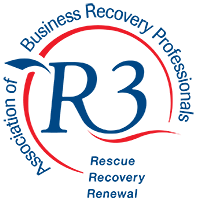When a business in the UK reaches the end of its life cycle, the terms ‘liquidation’ and ‘dissolution’ are often used, though they represent two distinct processes. Both are means of closing down a company, but they differ in the procedure, the legal implications, and the timing involved. Understanding these differences is essential for business owners who may be contemplating the closure of their company. In this blog, we’ll outline the key distinctions between liquidation and dissolution, providing a clearer picture of what each process entails.
What is Liquidation?
Liquidation refers to the winding up of a company’s affairs, typically selling off its assets, paying off creditors, and distributing any remaining funds to shareholders. This process is usually initiated when a company is insolvent – meaning it’s unable to pay its debts. There are several forms of liquidation, including compulsory liquidation (ordered by the court) and voluntary liquidation (which can be initiated by the company’s directors or shareholders).
Key features of liquidation:
- Creditors are paid: During liquidation, the company’s assets are sold to repay as many debts as possible. The proceeds are distributed to creditors in a particular order of priority, with secured creditors (those with collateral) typically being paid first.
- Appointment of a liquidator: A qualified Insolvency Practitioner (IP) is appointed to oversee the liquidation process. The liquidator will take control of the company, sell its assets, and deal with its creditors.
- Formal process: Liquidation is a legal process, and companies undergoing liquidation must follow specific statutory requirements. This includes holding creditors’ meetings, filing necessary documents with Companies House, and submitting a final report to close the process.
- Impact on company directors: Company directors must comply with specific legal duties during the liquidation process. If they’re found to have acted improperly, they can be held personally liable for the company’s debts or face disqualification from acting as a director in the future.
Liquidation is often seen as a more involved and formal process than dissolution, as it deals with the financial and legal aspects of closing a business.
What is Dissolution?
Dissolution, on the other hand, refers to the formal process of removing a company from the register at Companies House, which means the company ceases to exist as a legal entity. Dissolution is typically used for solvent companies that don’t have outstanding debts or liabilities. It’s a more straightforward and quicker way of closing down a business when the company has no creditors to satisfy or assets to liquidate.
Key features of dissolution:
- For solvent companies: Dissolution is often used by small businesses or companies with no debts and ceased trading. The company must have no outstanding liabilities, and its directors must confirm that it’s in a position to be dissolved.
- No assets to liquidate: Unlike liquidation, selling off assets in a dissolution is unnecessary. The company is effectively ‘struck off’ the register and ceases to exist as a legal entity.
- Simpler and faster process: Dissolution is usually quicker and less expensive than liquidation. The process typically takes around three months from applying to Companies House, and fewer formalities are involved.
- No creditors involved: If a company has outstanding debts or creditors, dissolution is not an appropriate method of closing down the business. In such cases, liquidation would be the more suitable option.
Dissolution is a straightforward method of closing down a business, but it only applies when a company is solvent and has no outstanding financial obligations.
Liquidation vs. Dissolution
Although both liquidation and dissolution serve the same ultimate purpose of closing down a company, the processes and circumstances in which each is used vary significantly. Here are the key differences between liquidation and dissolution:
- Financial status: Liquidation is typically used when a company is insolvent, meaning it can’t pay its debts. Dissolution, however, is suitable for solvent companies with no outstanding liabilities.
- Process complexity: Liquidation is a formal and often complex process involving the sale of assets, the appointment of a liquidator, and the payment of creditors. Dissolution is more straightforward, requiring fewer formalities and no asset liquidation.
- Timeframe: Liquidation can take months or even years, depending on the company’s affairs and the number of creditors involved. Dissolution usually takes around three months, as it only involves the removal of the company from Companies House.
- Involvement of creditors: In liquidation, creditors are actively involved in the process, and their claims must be settled before any remaining funds can be distributed to shareholders. No creditors are involved in dissolution, and the company simply ceases to exist.
When is liquidation the right option?
Liquidation is the right choice for companies in financial distress or unable to meet their obligations. It provides a structured way to wind up the company’s affairs, ensuring that creditors are paid and any remaining funds are distributed to shareholders. If your company is insolvent or unable to continue trading, liquidation is likely the better option, especially when addressing debts and paying creditors.
When is dissolution the right option?
Dissolution is ideal for solvent companies with no outstanding debts. If your business has ceased trading and has no financial obligations, it offers a quicker, more cost-effective way to close the company. However, make sure all matters, such as taxes and employee payments, are settled before applying. If you’re confident there are no creditors or liabilities, dissolution may be the right choice.
Making the right choice
Understanding the differences between liquidation and dissolution is essential for business owners considering closing their companies. While liquidation is a formal process designed to resolve the affairs of insolvent companies, dissolution is a simpler option for solvent businesses with no debts.
If you’re uncertain which route is best for your company, seeking expert advice is important. An experienced Insolvency Practitioner can help you navigate these processes, making sure that you make the right decision for your business.
Ask an expert
Our team can advise you on the best insolvency solution for your individual needs. Our qualified, knowledgeable Insolvency Practitioners, authorised by the Institute of Chartered Accountants in England and Wales, can give free, impartial advice to make sure you liquidate your business in the best way. Contact us on the form below, via our live chat, email mail@simpleliquidation.co.uk, or please call 0800 246 5895, and we’ll be happy to help.




